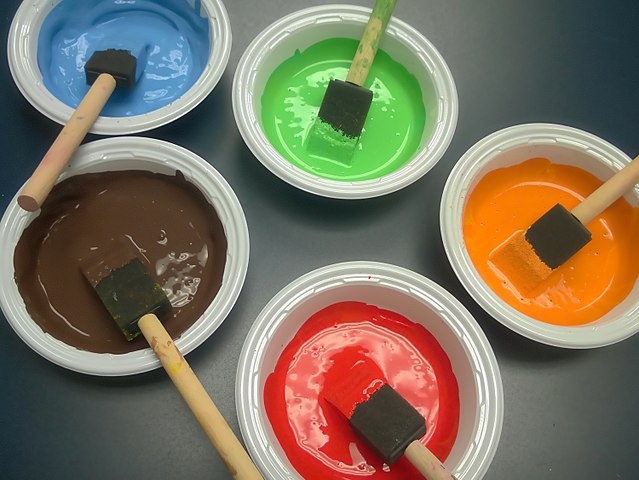
Paint Ingredients
entAll paints generally have four main ingredients: pigments, binders, solvents (liquids) and additives. Pigments provide color and hide, while binders work to “bind” the pigment together and create the paint film. Solvents are the liquids that suspend the ingredients and allow you to place the paint on the surfaces, and additives are ingredients that provide specific paint properties such as mildew resistance. All four ingredients combine to provide paint that meets your specific design needs.
Paint Ingredients
-
Pigments:
Pigments are finely ground particles that are dispensed into paint and provide color and hiding properties. There are two primary types of pigment – prime pigments and extender pigments.
Prime pigments are those that contribute to both wet and dry hide in paint. Titanium dioxide (TiO2) is the most expensive pigment and it contributes directly to a paint’s wet hide, while providing whiteness. Colorants are prime pigments that provide the actual color within the can. There are two main types – organic and inorganic.
Organic colorants provide the brighter colors, and examples of these pigments include hansa yellow and phthalo blue. These are not very durable for exterior paint application.
Inorganic colorants are the duller, earthy colors and are more durable for exterior paint application.
-
Solvent / Diluent
It is a volatile liquid used to obtain desired viscosity and flow of the paint. solvent keeps the solid components of paint in suspension and also influences the adhesion properties of the surface. It is an optional component of paint i.e. some paints may not have solvent. The solvent after application of paint evaporates to leave a solid dry film on the surface. The most common solvents used in architectural paints are water and mineral spirits. Water is used in acrylic paints (both interior and exterior) while mineral spirits are used in oil based paints.
-
Resins: Paint Binders
If water helps keep the solids in water-based latex paint solvent, it is the resins that bind everything together and help the paint dry after it has been applied to the surface. For many latex paints, these resins come in the form of acrylic emulsion polymers.
Solventbased resins come in a very wide range of types. The most common solventbased resins are termed ‘alkyd resins’ that are normally used in enamel paints. Urethane alkyds often used in clear varnishes. Protective coating resins include types such as Epoxy, Urethane, Polysiloxane and Moisture Cured Urethane.
-
Additives:
Additives are the special components of paint and are used in small quantities to impart additional characteristics to the paint. The purpose of using additives is to;
Improve the production and storing properties
Reduce the drag of the paint
Make the paint flow on a surface
Add texture to the paint
Enhance the adhesive characteristics for special surfaces
Give pleasant odor in case of interior painting
Provide water proofing characteristics
Common Types of Additives:
Drying/Curing Agents
Stabilizers
Anti-Mold Agents
Wetting & Dispersing Additives
Anti-settling Agents
Anti-skinning Agents


Leave a Reply